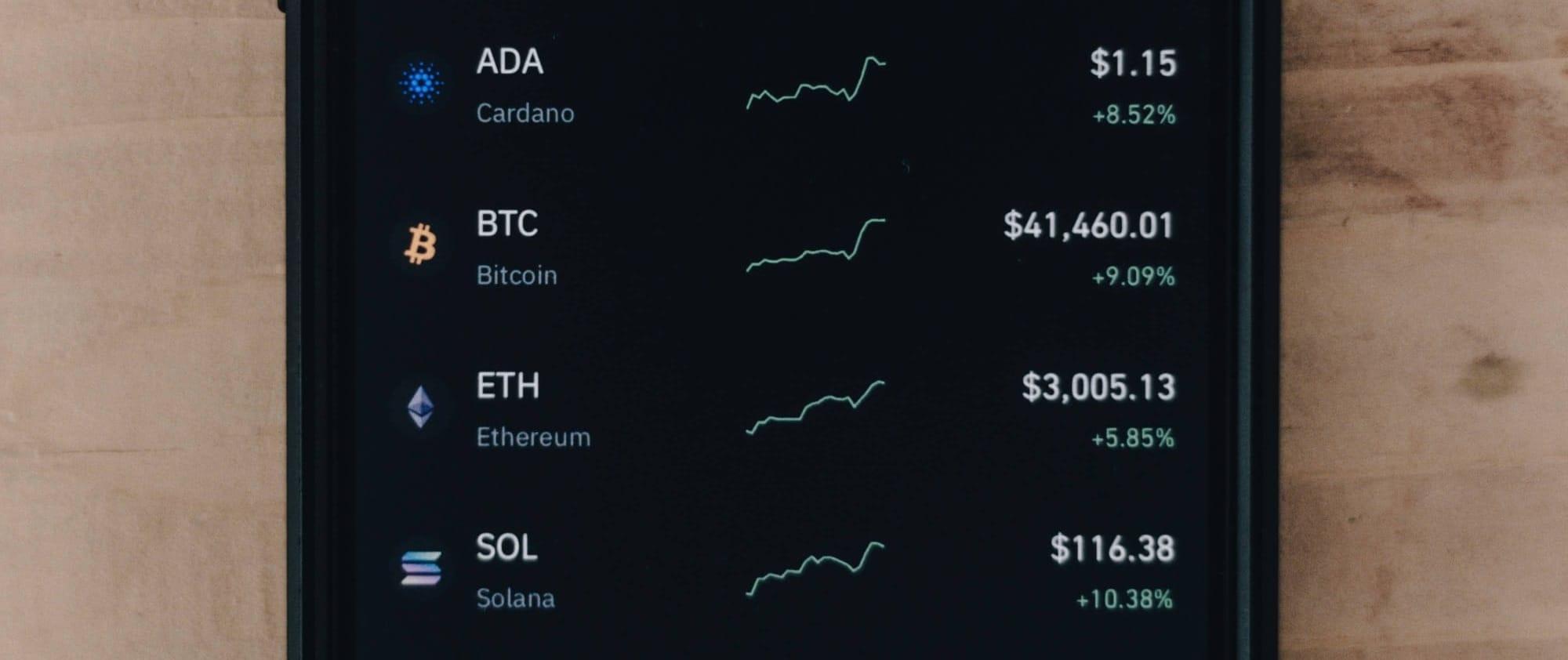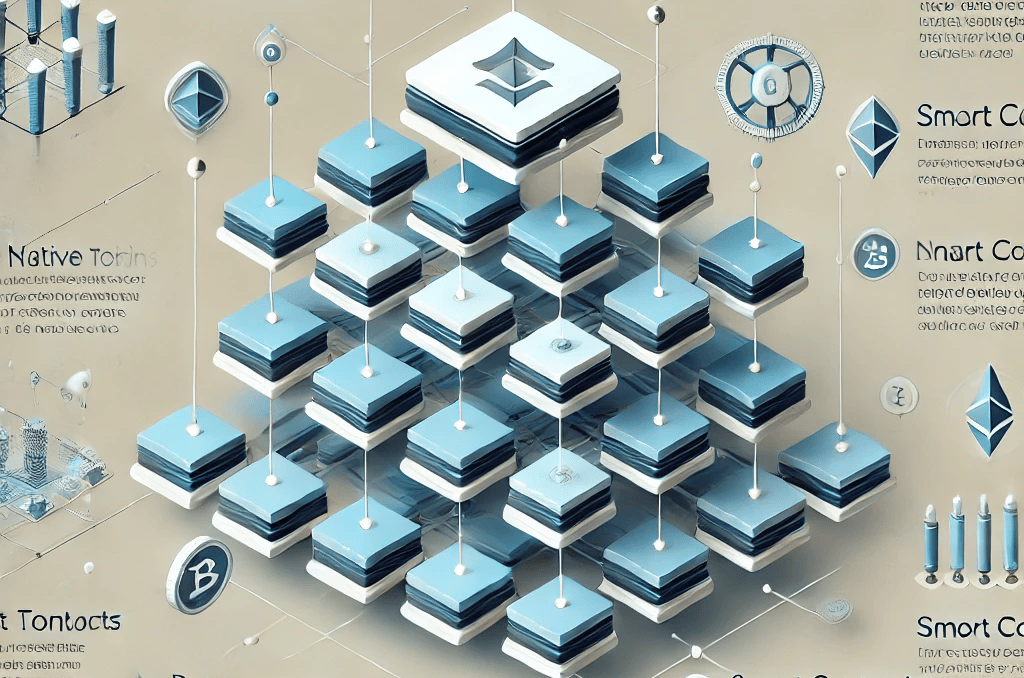Understanding Layer 1 Blockchain: Basics, Benefits, and Marketing for Mass Adoption
Blockchains make Web3 applications possible, providing a robust, programmable layer upon which decentralized applications (dApps) are built.

Blockchain technology is a major game changer for any application that relies on networks. Some say blockchain tech and Web3 projects are going to be the future of the internet, but what do they mean by a blockchain Layer 1?
Lever.io provides a revolutionary platform for increasing the reach of Web3 projects building on blockchain technology today. At the very heart of any Web3 application lies the distributed networks that make Web3 dApps possible, a Layer 1 blockchain.
Layer 1 blockchains form the core of decentralized systems, processing transactions and keeping the network secure. This article explores what Layer 1 blockchains are, their key features, popular examples, and how they are promoted for wider use.
Key Takeaways
- Layer 1 blockchains serve as the foundational network for decentralized ecosystems, essential for on-chain transactions and the operation of decentralized applications (dApps).
- Consensus mechanisms like Proof of Work (PoW) and Proof of Stake (PoS) are critical for ensuring the security and integrity of Layer 1 blockchains, with each mechanism balancing security, scalability, and decentralization.
- Effective marketing and community building, such as employing influencer endorsements and strategic partnerships, are crucial for the mass adoption and success of Web3 projects and Layer 1 blockchains.
The Blockchain Revolution and the Rise of Web3

The advent of blockchain technology has opened the doors to Web3, a decentralized internet where users have greater control over their data and digital interactions.
Blockchains make Web3 applications possible, providing a robust, programmable layer upon which decentralized applications (dApps) are built.
Imagine the transformative power of social media, cellular networks, and wifi combined, and you begin to grasp the massive potential Web3 holds for revolutionizing our daily lives.
Nevertheless, obtaining mass adoption is a task fraught with challenges. A considerable obstacle is the need to market Web3 projects effectively to emerging and expanding audiences.
Grasping the operations of these projects and the advantages they provide is key to encouraging adoption. This scenario highlights the importance of strategic marketing, which brings the innovative facets of Web3 to a wider audience.
Lever.io emerges as a powerful tool in this landscape, helping Web3 projects increase their outreach and capture larger audiences. Through targeted marketing strategies, Lever.io can bridge the gap between complex blockchain concepts and everyday users, fostering greater engagement and understanding.
What Is Layer 1 Blockchain?

Layer 1 blockchains are the bedrock of the decentralized ecosystem. They operate as the primary and autonomous chains on which transactions are directly executed and confirmed.
These foundational networks, often referred to as the main blockchain network, support the infrastructure for decentralized applications (dApps) and protocols, making them indispensable in the blockchain landscape.
Acting as the primary blockchain network, a Layer 1 blockchain processes on-chain transactions and sustains its network of nodes. The nodes, utilizing consensus algorithms such as Proof of Work (PoW) or Proof of Stake (PoS), validate transactions and append new blocks to the blockchain. This bedrock layer is indispensable in assuring the security, decentralization, and efficiency of the blockchain network.
Technologies such as cryptographic hashing ensure the immutability of Layer 1 blockchains, making them tamper-resistant and highly secure. From decentralized finance (DeFi) to supply chain management, Layer 1 blockchains form the backbone of various innovative applications.
Key Features of Layer 1 Blockchains

Layer 1 blockchains boast numerous primary characteristics that enhance their robustness and versatility. At the heart of these blockchains are consensus mechanisms, which:
- Validate transactions
- Achieve agreement among network participants
- Prevent malicious activities
- Ensure the integrity of the blockchain network by validating transactions.
Another essential feature is the presence of native cryptocurrencies. For instance, Bitcoin (BTC) is the native cryptocurrency of the Bitcoin blockchain, while Ether (ETH) serves the same role for the Ethereum blockchain. These native tokens facilitate transactions and incentivize network participation, ensuring the smooth operation of the blockchain.
Additionally, Layer 1 blockchains, acting as the computational layer, facilitate the execution of smart contracts - self-executing agreements encoded directly into the blockchain. This feature diminishes reliance on intermediaries while boosting transparency for all parties.
Additionally, the security of Layer 1 blockchains is paramount, employing cryptographic algorithms, such as asymmetric key pairs, and decentralized network structures to ensure the ledger’s integrity and tamper-resistance.
Major Layer 1 Blockchains for Building Web3

Numerous Layer 1 blockchains have surfaced as forerunners in the decentralized realm. The Bitcoin network, for instance, is renowned for its secure peer-to-peer transactions and utilization of the Proof of Work (PoW) consensus mechanism. Bitcoin’s native token, BTC, has become a cornerstone of the cryptocurrency market.
Ethereum, another prominent Layer 1 blockchain, revolutionized the space by introducing smart contracts and supporting decentralized applications (dApps). Its native token, Ether (ETH), plays a crucial role in powering these applications. Ethereum’s flexibility has made it a preferred platform for developing new blockchain-based solutions.
Other notable Layer 1 blockchains include Cardano, known for its rigorous approach to security and scalability, and Solana, which employs the Proof of History (PoH) consensus mechanism to achieve high transaction speeds. Each of these blockchains brings unique features to the table, contributing to the diverse and dynamic blockchain ecosystem.
Consensus Mechanisms in Layer 1 Blockchains

Consensus mechanisms play a pivotal role in preserving the security and integrity of Layer 1 blockchains. These mechanisms validate transactions and ensure agreement among network participants, preventing fraud and maintaining the trustworthiness of the blockchain.
The two most popular consensus mechanisms in Layer 1 blockchains are Proof of Work (PoW) and Proof of Stake (PoS).
Proof of Work (PoW), used by the Bitcoin blockchain, involves solving complex cryptographic puzzles to add new blocks to the blockchain. While secure, this method is resource-intensive and slower compared to newer mechanisms.
In contrast, Proof of Stake (PoS), employed by Ethereum, is quicker and less resource-intensive. PoS mechanisms enhance scalability and reduce transaction fees, making them attractive for decentralized finance (DeFi) applications.
Other consensus mechanisms include Delegated Proof of Stake (DPoS), which further improves scalability by allowing network participants to vote for delegates who validate transactions. Each consensus mechanism balances security, scalability, and decentralization to meet the specific needs of the blockchain network.
Scalability Solutions for Layer 1 Blockchains

Scalability poses a substantial challenge to Layer 1 blockchains. They must accommodate a growing number of transactions while maintaining efficiency and security, which is difficult considering the constraints of cryptography and current computational limits.
Layer 1 blockchains use techniques like Layer 2, sidechains, and state channels as a scaling solution to improve scalability and throughput. These methods help address the challenges associated with increased network activity.
Layer 2 solutions and sidechains are separate blockchains that run parallel to the main blockchain, allowing for offloading some of the transaction processing to improve overall scalability. So, even massive amounts of meme coin trading won't clog the Layer 1.
State channels enable users to process transactions off-chain, conducting multiple transactions and only recording the final balance on the main blockchain. This reduces the load on the main network and enhances transaction speed while lowering gas fees.
By handling transaction data off-chain, these scalability solutions offer significant benefits, but they require careful planning and testing to maintain the blockchain’s security and integrity.
Use Cases of Layer 1 Blockchains

Layer 1 blockchains underpin decentralized finance (DeFi), offering the necessary infrastructure for a range of financial services and products.
They enable the creation of decentralized exchanges, lending platforms, and stablecoins, transforming traditional financial systems by offering greater transparency and efficiency.
Beyond DeFi, Layer 1 blockchains have applications in supply chain management, healthcare, digital identity, and more. Any application that depends on highly centralized and insecure networks can be recreated on-chain, leveraging the security and transparency of Layer 1 blockchains.
As technology evolves, we can expect an increasing number of internet-based applications to move onto these distributed networks. Already, a significant number of DePIN (Decentralized Physical Infrastructure Network) projects have created Web3 versions of Google Maps and even wireless networks!
Influencer Marketing for Layer 1 Blockchain Projects

Amid the competitive terrain of blockchain projects, influencer marketing has risen as a key strategy for promoting adoption and differentiating between various Layer 1 blockchains. Influencers with sizable social media followings can endorse projects, providing them with credibility and reaching a broader audience.
Effective influencer marketing strategies in the blockchain space include:
- Leveraging trust and authenticity
- Educational collaborations
- Informative walkthroughs and guides
By partnering with influencers who have built trust with their followers, blockchain projects can foster greater engagement and encourage participation.
Community Building and Partnerships
Cultivating a robust community is integral to the triumph of Layer 1 blockchain projects. Web3 communities provide a platform for collaboration, feedback, and support, fostering a sense of ownership among users.
Effective community building involves defining a compelling purpose and encouraging active participation. Tapping into communities built by creators on Youtube or social media sites like Instagram are major avenues towards finding new users.
Partnerships also play a crucial role in expanding the reach and capabilities of blockchain projects. Leveraging platforms like Telegram, Discord, and Twitter is essential for engaging and growing these communities. Strong leadership and community management are key to maintaining a thriving and supportive network.
Challenges and Future Prospects
Layer 1 blockchains grapple with multiple challenges, most notably the blockchain trilemma that requires a balance between decentralization, security, and scalability. As the number of users and transactions grows, scalability issues can impact transaction speed and network efficiency.
Despite these challenges, the future prospects for Layer 1 blockchains are promising. Some key factors that contribute to their potential include:
- Enhancing interoperability with other blockchain networks
- Overcoming scalability issues
- Paving the way for innovative use cases
- Widespread adoption
As technology advances, we can expect Layer 1 blockchains to play an increasingly integral role in the digital ecosystem. Layer 1 blockchains are the bedrock that Web3 applications are built on, and as Web3 grows, so will the adoption of Layer 1 technologies.
How Lever Increases Visibility for Blockchain Projects

Lever.io presents Web3 marketing teams with campaign strategies that amplify the visibility and outreach of blockchain projects. By connecting projects with influencers whose audiences align with their goals, Lever.io ensures more effective and relevant exposure. This targeted approach helps build credibility and trust, encouraging audience engagement and investment.
Lever.io provides data-driven insights, offering detailed analytics on influencer campaigns. This allows blockchain projects to track performance, understand audience behavior, and optimize future marketing efforts.
The platform’s scalable marketing solutions enable projects to start with smaller campaigns and scale up as needed, making efficient use of marketing budgets.
Additionally, Lever.io helps blockchain projects tap into loyal communities built by influencers, fostering their own engaged user base and creating strong, supportive networks. With a global reach, Lever.io works with influencers from around the world, helping projects expand their international presence and reach new markets.
Boost Your Marketing Campaigns with Lever Today!
Ready to amplify the reach of your Web3 project and engage with a broader audience? Lever.io is here to help. By leveraging our cutting-edge marketing strategies and connecting you with influential voices in the blockchain space, we ensure your project gets the attention it deserves. Join the revolution in decentralized marketing and take your Web3 project to new heights.
Visit Lever.io today to start your journey toward greater visibility and success in the decentralized world. Let's build the future of Web3 together!

